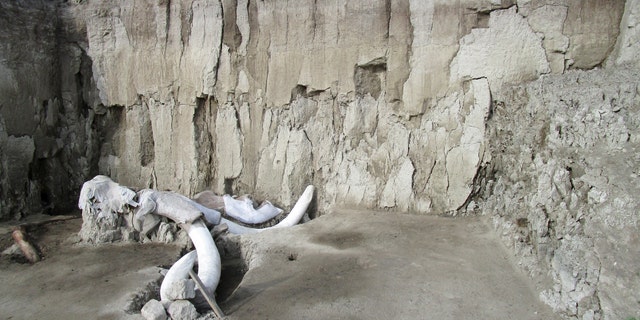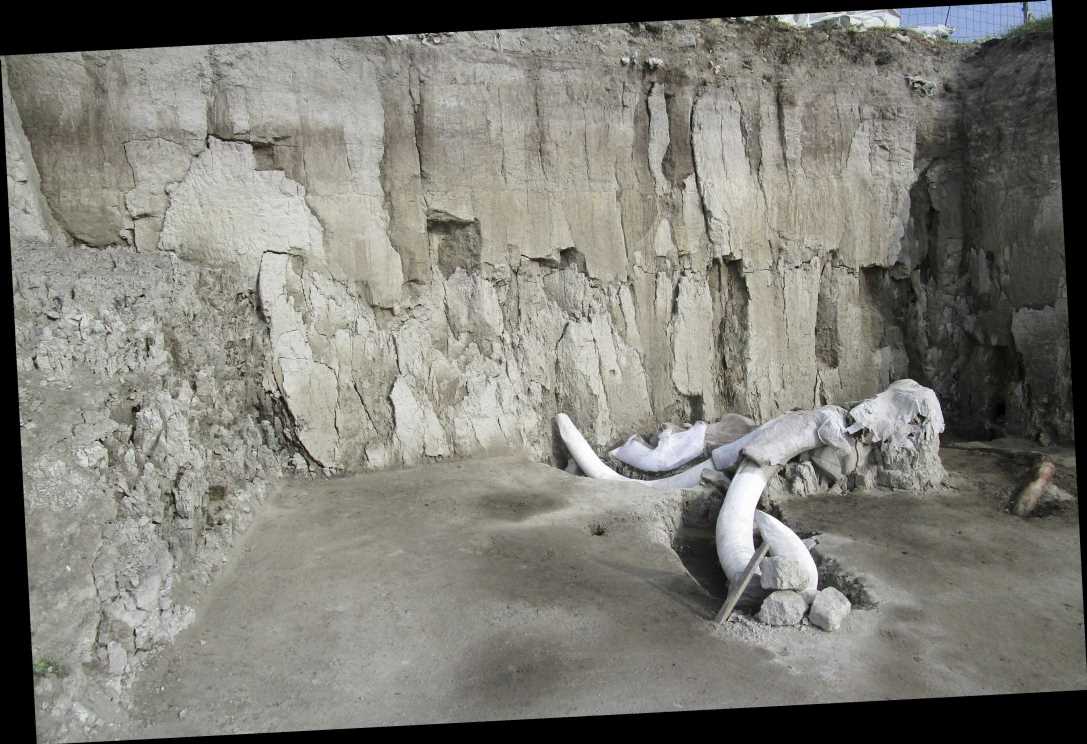Fox News Flash top headlines for Nov. 7
Fox News Flash top headlines for Nov. 7 are here. Check out what’s clicking on FoxNews.com
Mammoth traps built 15,000 years ago by prehistoric humans have been discovered in Mexico.
The traps consist of two pits that were used by hunters to corner and kill the huge animals. The walls of the pits are about 5.6 feet deep and each measures 82 feet in diameter, according to Mexico’s National Institute of Anthropology and History (INAH).
Archaeologists have recovered 824 bones from the pits in the neighborhood of Tultepec, just north of Mexico City. The bones are likely the remains of at least 14 mammoths. Remains of two other species that disappeared in the Americas — a horse and a camel — were also found.
Experts think that groups of between 20 and 30 hunters used torches and branches to separate some mammoths from their herd and direct them into the traps.

In this undated photo released by Mexico’s National Institute of Anthropology and History, INAH.
(Meliton Tapia/Mexico’s National Institute of Anthropology and History via AP)
Researchers said Wednesday the pits were found during excavations on land that was to be used as a garbage dump. Archaeologists spent 10 months excavating the sites.
The discovery “represents a watershed, a touchstone on what we imagined until now was the interaction of hunter-gatherer bands with these enormous herbivores,” said Pedro Francisco Sánchez Nava, national coordinator of archaeology at INAH, in a statement.
Other mammoth discoveries have been garnering attention. Earlier this year, for example, a 12-year-old boy discovered a woolly mammoth’s molar last month on the grounds of a resort in northeastern Ohio.

824 bones were recovered from the mammoth traps. (Photo: Edith Camacho, INAH)
Woolly mammoths were the last mammoth species to become extinct, about 4,000 years ago.
In 2012, a nearly complete skeleton of a woolly mammoth was unearthed in France, much to the delight of archaeologists. Woolly mammoth finds, however, are more common in Siberia, where frozen remains have been discovered on a number of occasions.
The unearthing of well-preserved woolly mammoth remains and advances in genetic research have fueled discussion that the long-extinct beasts could be cloned. However, the ethics of scientists bringing about the possible “de-extinction” of a species have been hotly debated, with critics saying that resources would be better spent on existing animals.
In 2017, a 10-year-old in New Mexico stumbled on a million-year-old fossil thought to be a Stegomastodon skull. The following year, three boys in Mississippi dug up a mastodon fossil believed to be almost 100,000 years old.
Fox News’ Willie James Inman, Joseph J. Kolb, Chris Ciaccia and the Associated Press contributed to this article. Follow James Rogers on Twitter @jamesjrogers
Source: Read Full Article

